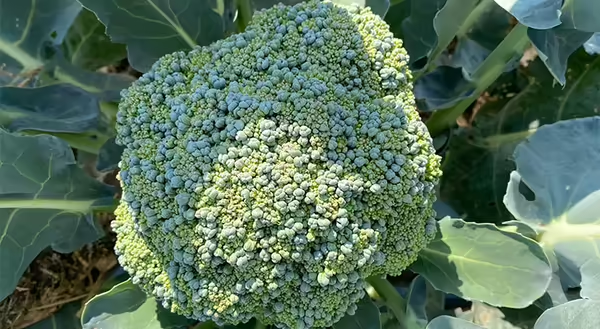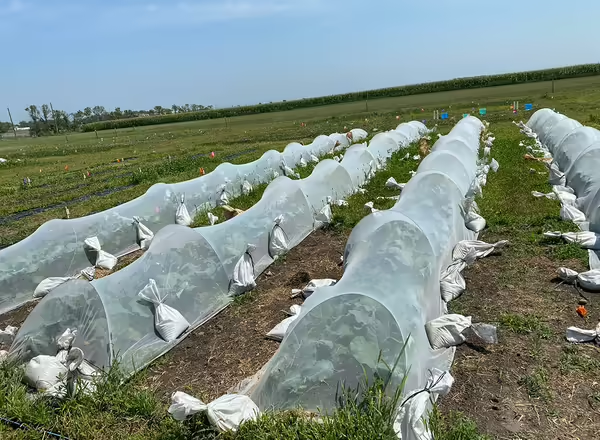
Its officially Halloween season, but that also means that frost is near for Northern Illinois. Some parts of the area have been affected by spotty frost, like Kendall County and parts of Western Kane County, which takes most crops out of production. For the operations impacted by frost, there may be some herbs, flowers, pumpkins, winter squash, limited garlic and cool season crops still available at the farmstand. This is also a great time to plant hardneck garlic for next season harvest, but bulbs can be very tricky to find locally at this time of year. There may be garlic available for sale in limited quantities at online retailers, but even that is becoming difficult.
There are some crops that are considered frost tolerant, and some that are considered frost hardy, so they won’t be as affected by the upcoming frost like warm season crops. Certain crops like beets, carrots, radishes, cabbage plants, cauliflower, lettuce and onions can handle a light frost as they are frost tolerant (28 to 32°F). Crops like broccoli, sprouting broccoli, spinach, arugula, brussels sprouts, kohlrabi, kale, turnips, garlic and some onion varieties can handle a harder frost (below 28°F), making them good choices for continued fall production.

Options available to protect cool season crops through fall, some even lasting through winter include:
- Season Extension can be helpful for maintaining temperature. Covering crops with a high-tunnel or a low-tunnel will help maintain temperature and act as a controlled environment. Depending on management and temperature, some brassicas can last through winter in a high tunnel.
- Agribon or ProtekNet row covers can be another opportunity to extend the season, especially for crops that cannot withstand a hard frost. Crops like cabbage, broccoli, lettuce, and brussels sprouts work well under row covers for the remainder of fall. Even some warm season crops like tomatoes and peppers can last a few more weeks after a frost when a tall row cover is installed. Make sure to purchase the proper size as brassicas can grow a lot bigger than expected which can stretch the material and create holes, welcoming pests and creating susceptibility to frost.
- Mulching certain areas can help retain moisture and act as a soil “insulator” when snow arrives, helping to prolong certain brassica crops for a few weeks but can also retain too much moisture if you’re not careful.
Fun fact, sprouting broccoli and purple kale contain anthocyanin, which has the tendency to resist winter snow rots and be more cold hardy compared to other varieties available. Sprouting broccoli, sometimes considered broccolini, can be a good alternative to traditional broccoli as it withstands heat better and can last through very hard frosts, even hard winters with an agribon floating row cover. When I was in graduate school in South Dakota, we were harvesting broccolini until mid-December, and they get much colder than Northern Illinois! There are many possibilities this fall for continuing vegetable production on Northern Illinois operations, temperature and moisture being key factors in maintaining crop health.